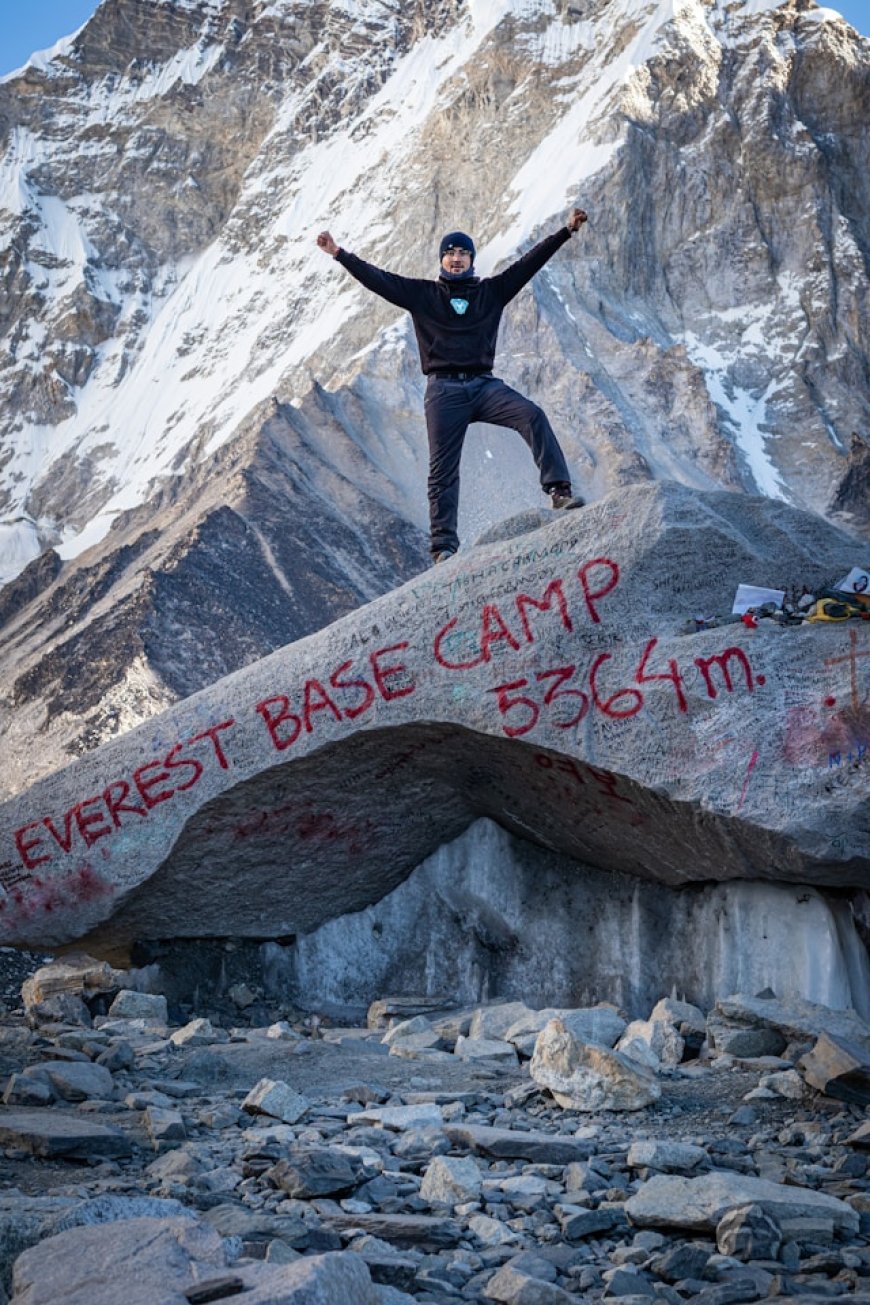Everest Base Camp Trek: A Journey to the Roof of the World

Highlights of the route:
Lukla to Namche Bazaar: The trail starts with a fall to Phakding and then climbs to Namche Bazaar, which is the Khumbu region's economic center.
Trekkers can see Buddhist rites against the backdrop of Ama Dablam at the renowned Tengboche Monastery, one of the largest in the Khumbu region, which is reached by ascending from Namche Bazaar to Tengboche.
Tengboche to Dingboche: The journey continues through yak meadows and rhododendron forests after Tengboche, reaching Dingboche for acclimatization.
Dingboche to Lobuche: As the journey continues uphill, it passes via Thukla, which is a memorial to climbers who died on Everest, and then into Lobuche.
Through Gorak Shep: Trekkers travel from Lobuche to Gorak Shep, the final community before Everest Base Camp. The best panoramic views of Everest, including views of the summit at sunrise or sunset, can be had on a side trip to Kala Patthar.
Return to Lukla: The return path is taken back to Lukla after arriving at Base Camp.
The Ideal Time to Go Trekking
Spring (March to May) and fall (September to November) are the best seasons for the Everest Base Camp Trek. Clear skies, consistent weather, and colorful rhododendron flowers in the spring are all features of these times. While monsoon season (June to August) brings heavy rains and poor visibility, winter treks are still doable but significantly colder.
Experience with Culture
Immersion in culture is as important to the hike as seeing the mountains. Renowned for their skill in mountaineering, the Sherpa people provide insights into their hospitality, religious customs, and way of life. A greater comprehension of Tibetan Buddhism and Sherpa culture can be gained by seeing monasteries and taking part in regional celebrations.
Lodging and Food
Depending on the village, lodging is provided in teahouses that vary in comfort from simple to luxurious. Trekkers can enjoy traditional dishes like Sherpa stew, momo (dumplings), and the common 'Dal Bhat' at these communal dining venues. There are several, but not many, options for Western cuisine.
Physical and Mental Preparation
Fitness: To cope with the altitude and lengthy walking days, this journey requires strong cardiovascular condition. Strength training, backpack trekking, and, if feasible, altitude simulation should all be a part of the training regimen.
Acclimatization: To prevent altitude sickness, appropriate acclimatization days are planned. It's important to treat symptoms like headaches and nausea seriously.
Gear: Insulated clothes, high-quality boots, a down jacket, and sleeping bags that can withstand cold temperatures are all necessary pieces of equipment.
Licenses
A permit is needed to enter Sagarmatha National Park, which includes a large portion of the walk.
The Information Management System (TIMS) card is used by trekkers for tracking and safety.
Environmental Factors
The Everest region is subject to environmental changes. By using biodegradable items, cutting back on waste, and honoring regional environmental and sacred site norms, trekkers can lessen their influence on the environment.
Health and Safety
Guides and Porters: Employing local guides and porters improves safety, particularly while traversing through potentially dangerous areas, and benefits the community.
Health: Use a medication such as Diamox to prepare for altitude sickness. Comprehensive travel insurance is advised because emergency evacuation services (helicopter rescue) are available but expensive.
Conclusion
The Everest Base Camp Trek is more than simply a physical adventure; it's a cultural excursion, a test of endurance, and an expedition through some of the most breathtaking scenery on Earth. This trip makes a lasting impression on everyone who does it, whether it's the excitement of being at the base of the tallest peak in the world or the humble experience of Sherpa hospitality.
What's Your Reaction?











![Noots Focus Reviews [Truth Exposed 2025]!](https://news.bangboxonline.com/uploads/images/202501/image_430x256_678e3b94881a1.jpg)











